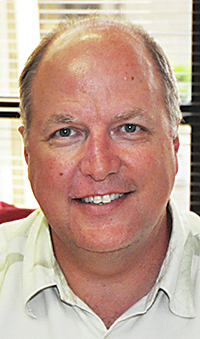HILO — More than half of the doctors in Hawaii will reach the retirement age of 65 within the next decade, according to a new report submitted Thursday to the state Legislature.
The University of Hawaii Physicians Workforce Assessment says of the 8,900 physicians licensed to practice in Hawaii, roughly 2,903 full-time physicians are actually practicing medicine. The report emphasizes that supply of new physicians is not keeping up with demand and Hawaii is at a critical juncture.
“Demand grows by 50 … per year, and we lose 50 physicians per year, so we need 100 per year to maintain the current staffing levels,” the report concludes.
Who, then, will be your doctor if about half retire or cut the amount of time they serve patients in the next decade?
“We do have this big population of physicians that will be at retirement age fairly soon,” said Dr. Christopher Flanders, executive director of the Hawaii Medical Association.
Flanders, 60, has himself taken on an administrative role with the HMA, meaning he isn’t currently treating patients in his specialty of neurological pathology — something that likely will be increasingly true in the next few years for many of the state’s physicians near retirement.
“I live on the Big Island. So I live with that shortage. It’s concerning,” he said.
According to the report, 15 percent of the state’s physicians already are between ages 66 and 75. The university estimates Hawaii needs the equivalent of an extra 707 full-time physicians in order to meet current patient demand.
In Hawaii County, it is estimated the population needs three allergists, but there is only one. Six infectious disease specialists, three neurosurgeons and three neonatologists are needed. But there are no physicians in the county with those specialties.
Primary care physicians are among those who will be in the biggest demand statewide. And, in Hawaii County, the university estimates there’s already a shortage: the need is for 180 to meet patient demand, but there are only 143.
Flanders said part of the reason is the cost doctors pay to complete medical school.
“When they walk out of medical school with a quarter-million dollars in debt, they have to be careful about what positions they take,” he said.
Flanders said the medical association thinks the Legislature should take a dual approach.
First, he said, legislators should consider the long term and start a rural-medicine education program. Even if that were to start tomorrow, he said, “it’ll still be seven years down the road” because it takes four years for medical school and then a three-year (at least) residency program to begin treating patients independently.
Secondly, Flanders said, the Legislature should look short term at where Hawaii is falling short in terms of recruitment and retention.
The Legislature and medical organizations will need to figure out how to make jobs more available for physicians’ spouses and to address student debt new physicians typically carry.
“It just doesn’t compete in recruiting. A lot of times they don’t stay very long,” Flanders said.
Email Jeff Hansel at jhansel@hawaiitribune-herald.com.



